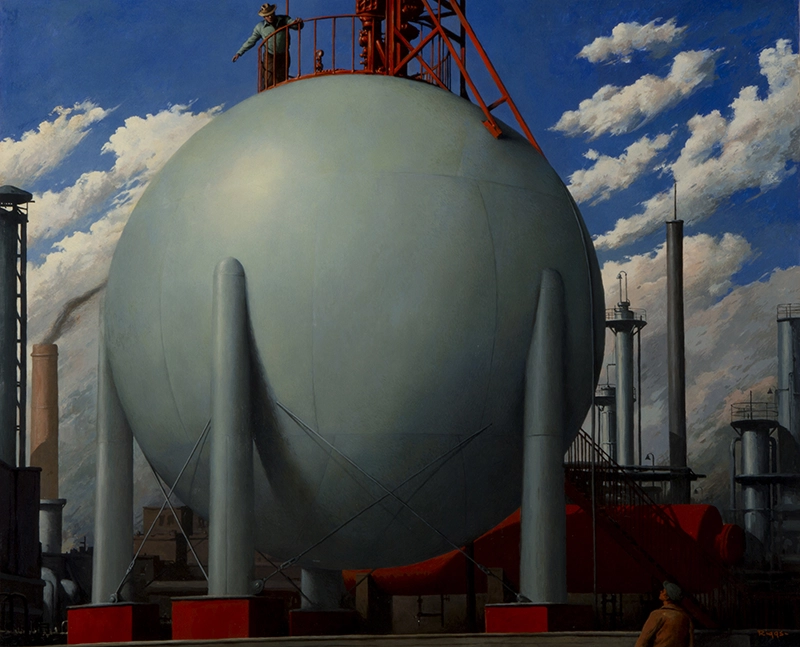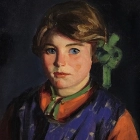The closing of the 19th century and the first decades of the 20th century saw massive changes in the American art scene, as artists, still heavily influenced by Western European art centers, began to aggressively seek to define a new “American art.” Fueled by trade, industry, and immigration, New York grew into a dominant international city, easily rivaling its European counterparts as a hub of finance and culture. Artists responded to this transformative period with explorations of the changing social scene and growing urban landscape, resulting in a revolutionary time for American art.
American Realism: Visions of America, 1900-1950 looks at this period through the paintings, drawings, and prints that sought to capture the new American experience, especially within the nation’s burgeoning and rapidly evolving urban centers. Drawing primarily from the collections of three Michigan museums — the Kalamazoo Institute of Arts, Flint Institute of Arts, and the Muskegon Museum of Art — the show begins in the early 1900s and continues through the 1940s, highlighting artists whose work sought to define the era. The exhibition also explores the contributions of women and artists of color active during this period, to share a deeper look into the stories and lives of those who did not always receive widespread attention during that era. American Realism will feature the works of artists such as Robert Henri, George Bellows, Jacob Lawrence, Guy Pene du Bois, Edward Hopper, Peggy Bacon, Reginald Marsh, Hughie Lee-Smith, and many others, including Michigan artists who too sought to define and document the changing ways of living that they saw around them.


